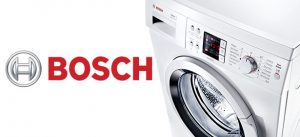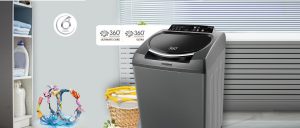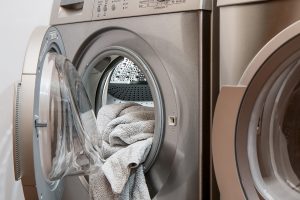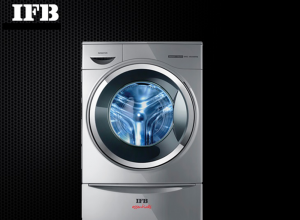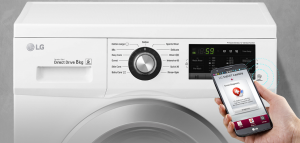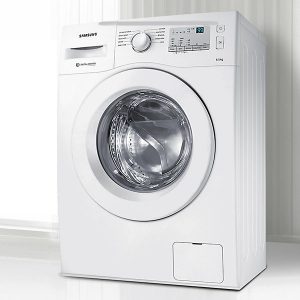Best Washing Machines in India (Top/Front Load and Semi Automatic ) in 2024 Buyer's Guide
- Best Washing Machine Brands in India in 2024
- Best Washing Machine Models in India in 2024
- Buying Guide:
- How Do Washing Machines Work?
- Fully Automatic vs. Semi-Automatic Washing Machines
- Front-Load vs. Top Load Washing Machines
- BEE rating and Electricity Consumption of Washing Machines
- Washing Machine Size and Capacity
- Drying of Clothes in Washing Machine
- More Motion More Cleaning
- Hard Water Processing
- Low Water Pressure handling
- Voltage Stabilizer for Washing Machines
- Bubble Wash and Drum Sanitization
- Steam Wash and Anti Allergen
- Auto Detergent Dispenser
- Spin Speed of Washing Machine
- Inverter Technology in Washing Machines
- Direct Drive Technology in Washing Machines
- Is There An App For That?
These days when we go out in the market to buy any appliance, we are loaded with options. Finding the right one that fits our needs and is also efficient may be challenging. Washing machines are no different. We at Bijli Bachao got several messages in the past from readers asking for ideas on buying a washing machine, and this was a long pending item we had in our mind to write about. This article intends to provide you list of best washing machines in India in 2024 and be a “buying guide” for washing machines that can help you understand various technologies available in the market and understand which is more energy-efficient. We have also listed some of the top models from various brands available in the market.
- Best Washing Machine Brands in India in 2024
- Best Washing Machine Models in India in 2024
- Buying Guide:
- How Do Washing Machines Work?
- Fully Automatic vs. Semi-Automatic Washing Machines
- Front-Load vs. Top Load Washing Machines
- BEE rating and Electricity Consumption of Washing Machines
- Washing Machine Size and Capacity
- Drying of Clothes in Washing Machine
- More Motion More Cleaning
- Hard Water Processing
- Low Water Pressure handling
- Voltage Stabilizer for Washing Machines
- Bubble Wash and Drum Sanitization
- Steam Wash and Anti Allergen
- Auto Detergent Dispenser
- Spin Speed of Washing Machine
- Inverter Technology in Washing Machines
- Direct Drive Technology in Washing Machines
- Is There An App For That?
In this post, we will try to provide you some tips to buy a new Washing Machine. But before that, we will provide you the information that you came here to look for: The Best Washing Machine Brands in India and Top Models in Washing Machine. For the Buying Guide, click: here. To know about Latest Technologies in Washing Machines in India, click here.
Best Washing Machine Brands in India in 2024
These are the most popular brands for washing machines in India. Brands like Bosch/Siemens Washing Machines are quite popular for their front-loading washing machines. Among the Indian brands, IFB leads the pack by giving tough competition to international brands. At the same time, Godrej, Onida Washing Machines, Midea, and Motorola have good models if someone has a tight budget.
If you are looking for reviews of various brands, you can check our brand review section over here: Link. Or you can click on the specific brand name mentioned above.
Best Washing Machine Models in India in 2024
Here are some good BEE 5 star rated models that are available on Amazon:
Top "Front Loading Washing Machines" in India
Here are some more front loading models:
 Samsung 6.0 Kg Inverter 5 star Fully-Automatic Front Loading Washing Machine (WW60R20GLSS/TL, Silver, Hygiene steam)
Samsung 6.0 Kg Inverter 5 star Fully-Automatic Front Loading Washing Machine (WW60R20GLSS/TL, Silver, Hygiene steam)
 Samsung 6.0 Kg Inverter 5 Star Fully-Automatic Front Loading Washing Machine (WW60R20GLMA/TL, White, Hygiene Steam)
Samsung 6.0 Kg Inverter 5 Star Fully-Automatic Front Loading Washing Machine (WW60R20GLMA/TL, White, Hygiene Steam)
 IFB 6 Kg 5 Star Front Load Washing Machine 2X Power Dual Steam (DIVA AQUA SXS 6008, Silver, Active Color Protection, Hard Water Wash)
IFB 6 Kg 5 Star Front Load Washing Machine 2X Power Dual Steam (DIVA AQUA SXS 6008, Silver, Active Color Protection, Hard Water Wash)
 LG 7 Kg 5 Star Inverter Touch Control Fully-Automatic Front Load Washing Machine with Heater (FHM1207SDL, Silver, 6 Motion Direct Drive)
LG 7 Kg 5 Star Inverter Touch Control Fully-Automatic Front Load Washing Machine with Heater (FHM1207SDL, Silver, 6 Motion Direct Drive)
 LG 8.0 Kg 5 Star Inverter Touch Control Fully-Automatic Front Load Washing Machine with Heater(FHM1408BDL, Silver, 6 Motion Direct Drive)
LG 8.0 Kg 5 Star Inverter Touch Control Fully-Automatic Front Load Washing Machine with Heater(FHM1408BDL, Silver, 6 Motion Direct Drive)
 Bosch 7 kg 5 Star Inverter Touch Control Fully Automatic Front Loading Washing Machine with In - built Heater (WAJ2416SIN, Silver)
Bosch 7 kg 5 Star Inverter Touch Control Fully Automatic Front Loading Washing Machine with In - built Heater (WAJ2416SIN, Silver)
 LG 9.0 Kg 5 Star Inverter Fully-Automatic Front Loading Washing Machine (FHM1409BDP, Platinum, 6 Motion Direct Drive)
LG 9.0 Kg 5 Star Inverter Fully-Automatic Front Loading Washing Machine (FHM1409BDP, Platinum, 6 Motion Direct Drive)
 Samsung 9 Kg 5 Star Inverter Fully-Automatic Front Loading Washing Machine (WW90T4040CX1TL, Inox, In-Built Heater)
Samsung 9 Kg 5 Star Inverter Fully-Automatic Front Loading Washing Machine (WW90T4040CX1TL, Inox, In-Built Heater)
Top "Top Loading Washing Machines" in India
Here are some more top loading models:
 Samsung 6.5 Kg 5 Star Inverter Fully-Automatic Top Loading Washing Machine (WA65T4262GG/TL, Gray, Wobble technology)
Samsung 6.5 Kg 5 Star Inverter Fully-Automatic Top Loading Washing Machine (WA65T4262GG/TL, Gray, Wobble technology)
 Panasonic 6 Kg 5 Star Fully-Automatic Top Loading Washing Machine ( NA-F60LF1HRB, Grey, Durable Metal Body, 8 Wash Program, Aquabeat wash technology, One touch smart wash)
Panasonic 6 Kg 5 Star Fully-Automatic Top Loading Washing Machine ( NA-F60LF1HRB, Grey, Durable Metal Body, 8 Wash Program, Aquabeat wash technology, One touch smart wash)
 Godrej 6 Kg 5 Star Fully-Automatic Top Loading Washing Machine (WTEON 600 5.0 A GPGR, Graphite Grey)
Godrej 6 Kg 5 Star Fully-Automatic Top Loading Washing Machine (WTEON 600 5.0 A GPGR, Graphite Grey)
 LG 7 kg 5 Star Inverter Fully-Automatic Top Loading Washing Machine (T70SKSF1Z, Middle Free Silver, TurboDrum)
LG 7 kg 5 Star Inverter Fully-Automatic Top Loading Washing Machine (T70SKSF1Z, Middle Free Silver, TurboDrum)
 Whirlpool 7.5 Kg 5 Star Royal Plus Fully-Automatic Top Loading Washing Machine (WHITEMAGIC ROYAL PLUS 7.5, Grey, Hard Water Wash)
Whirlpool 7.5 Kg 5 Star Royal Plus Fully-Automatic Top Loading Washing Machine (WHITEMAGIC ROYAL PLUS 7.5, Grey, Hard Water Wash)
 Whirlpool 7 Kg 5 Star Royal Plus Fully-Automatic Top Loading Washing Machine (WHITEMAGIC ROYAL PLUS 7.0, Grey, Hard Water Wash)
Whirlpool 7 Kg 5 Star Royal Plus Fully-Automatic Top Loading Washing Machine (WHITEMAGIC ROYAL PLUS 7.0, Grey, Hard Water Wash)
 LG 9.0 Kg 5 Star Smart Inverter Fully-Automatic Top Loading Washing Machine (T90SJSF1Z, Middle Free Silver, Jet Spray+)
LG 9.0 Kg 5 Star Smart Inverter Fully-Automatic Top Loading Washing Machine (T90SJSF1Z, Middle Free Silver, Jet Spray+)
 Samsung 9 Kg WiFi Enabled Inverter 5 Star Fully-Automatic Top Load Ecobubble Washing Machine (WA90BG4542BDTL, Bubble Storm technology, Dark Gray)
Samsung 9 Kg WiFi Enabled Inverter 5 Star Fully-Automatic Top Load Ecobubble Washing Machine (WA90BG4542BDTL, Bubble Storm technology, Dark Gray)
Top "Semi Automatic Washing Machines" in India
Here are some more semi automatic models:
 Whirlpool 6 Kg 5 Star Semi-Automatic Top Loading Washing Machine (SUPERB ATOM 60I, Grey Dazzle)
Whirlpool 6 Kg 5 Star Semi-Automatic Top Loading Washing Machine (SUPERB ATOM 60I, Grey Dazzle)
 Samsung 6.5 Kg 5 Star Semi-Automatic Top Loading Washing Machine (WT65R2200LL/TL, Blue, Air Turbo Drying System)
Samsung 6.5 Kg 5 Star Semi-Automatic Top Loading Washing Machine (WT65R2200LL/TL, Blue, Air Turbo Drying System)
 Panasonic 6.5 kg 5 Star Semi-Automatic Top Loading Washing Machine (NA-W65E5ARB, Blue, Powerful Motor)
Panasonic 6.5 kg 5 Star Semi-Automatic Top Loading Washing Machine (NA-W65E5ARB, Blue, Powerful Motor)
 Whirlpool 7 Kg 5 Star Semi-Automatic Top Loading Washing Machine (SUPERB ATOM 7.0, Grey Dazzle, TurboScrub Technology)
Whirlpool 7 Kg 5 Star Semi-Automatic Top Loading Washing Machine (SUPERB ATOM 7.0, Grey Dazzle, TurboScrub Technology)
 Whirlpool 7.5 Kg 5 Star Semi-Automatic Top Loading Washing Machine (ACE 7.5 SUPREME, Grey Dazzle)
Whirlpool 7.5 Kg 5 Star Semi-Automatic Top Loading Washing Machine (ACE 7.5 SUPREME, Grey Dazzle)
 LG 8 Kg 5 Star Semi-Automatic Top Loading Washing Machine (P8030SRAZ, Burgundy, Collar Scrubber)
LG 8 Kg 5 Star Semi-Automatic Top Loading Washing Machine (P8030SRAZ, Burgundy, Collar Scrubber)
 LG 8.5 kg 5 Star Semi-Automatic Top Load Washing Machine (P8535SKMZ, Middle Black, Roller Jet Pulsator)
LG 8.5 kg 5 Star Semi-Automatic Top Load Washing Machine (P8535SKMZ, Middle Black, Roller Jet Pulsator)
 LG 9 kg 5 Star Semi-Automatic Top Loading Washing Machine (P9040RGAZ, Grey, Lint collector)
LG 9 kg 5 Star Semi-Automatic Top Loading Washing Machine (P9040RGAZ, Grey, Lint collector)
 Whirlpool 9 Kg 5 Star Semi-Automatic Top Loading Washing Machine (ACE XL 9, Graphite Grey, 3D Scrub Technology)
Whirlpool 9 Kg 5 Star Semi-Automatic Top Loading Washing Machine (ACE XL 9, Graphite Grey, 3D Scrub Technology)
Buying Guide:
There are 700+ washing machine models in the market today. This makes the task of selecting the right washing machine tough. This situation is further exacerbated with each brand rolling out its own jargon rechristened as ‘features’. It becomes difficult to conclude some simple facts: how well do washing machines clean the soiled clothes, how much water will they consume in the process, and the running cost in terms of electricity bills. In this buying guide, we will try to answer these common queries and simplify the buying predicament for you with a side-by-side comparison of different types of washer styles. Also, we will compare and understand key features and technologies modern models come with, which you should know to make a better buying decision. But first, let us look at how washing machines work?
How Do Washing Machines Work?
There is simple physics behind the working of a washing machine. A detergent reduces the surface tension of water, essentially making the water “wetter”. One part of the detergent molecule is water-loving and attaches itself to water, while the other part attaches itself to the dirt. When the tub inside the washing machine rotates, the water is pushed out due to centrifugal force. This force takes out the dirt from the clothes. This is the basic working principle behind a washing machine. But then there are additional actions that work:
-
- Scrubbing: This is a typical action that happens when you rub clothes with each other. You would do this when you want to clean the collar of a shirt. You would dip the collar in detergent water and scrub it against itself to clean the dirt. Similarly, in a washing machine, clothes rub against each other, and in some cases, they also rub against the perforations along the tub’s wall. This scrubbing action helps clean clothes.
- Tumbling: Remember how they show dhobis wash in movies? The dhobi will take the cloth and beat it against a stone. In washing machines (especially front loaders), the cloth fall on the bottom of the tub due to gravity, and the impact takes out dirt.
These additional actions improve the cleaning performance of a washing machine.
Fully Automatic vs. Semi-Automatic Washing Machines
Whenever the word “automatic” is associated with a washing machine, it means that the machine not only washes the clothes but also extracts most water (about 96%) out of them after washing. The main difference between a fully automatic and semi-automatic washing machine is that in a fully automatic washing machine, all the processes from washing to spinning happen independently through an automated program. In contrast, in a semi-automatic, one must move clothes from one operation to another manually.
Automatic machines do everything on their own. Once you choose the wash program, the machine will automatically fill in the requisite water for a wash, choose the right wash cycle, rinse, drain the water, and finally do the spinning to get rid of the remaining moisture—all in the same drum.
The semi-automatic machine, on the other hand, needs a lot of manual intervention. You need to fill water before beginning the wash cycle and select the wash cycle/time. Also, once the wash is complete, you need to transfer clothes from the wash drum to the drier (spin) compartment. In a way, it gives more control over the washing process, but it’s generally considered labor-intensive. They lack any new and appealing features, and that’s why they are generally more affordable. From an energy-saving perspective, both machines (automatic and semi-automatic) are similar.
Semi-Automatic washing machines are usually much cheaper and have much fewer features in comparison to fully automatic machines. You will also find that mostly the tubs in a semi-automatic machine are made out of plastic, whereas the tubs in most fully automatic machines are made out of metal (or alloy like stainless steel). A metallic tub is usually more durable.
Semi-Automatic washing machines only come in top load options, and thus out of the actions mentioned above, they can only provide scrubbing.
Front-Load vs. Top Load Washing Machines
There are two types of Fully Automatic Machines available in the market: Front Load and Top Load. In a Top Load washing machine, you load (and take out) the clothes from the top of the machine. The tub inside it is vertical and rotates on the vertical axis. In contrast, a front loader has to be loaded from the side. There is a door in the machine that opens on the side, and the clothes are loaded from there. The drum is horizontal and rotates on the horizontal axis.
Front-loaders save a lot of water. You can safely assume the front loader would need half of the water than its top-loading counterpart. A top-loader mostly consumes over 150 lts of water, whereas a front loader would do the same job in 50-60 lts of water. A top-loading washing machine needs more water because when clothes are dry, they are lighter than water, and thus more water is required to soak and drown all the clothes in it. A front-load washing machine works with a tumbling action (just like rolling a tank on the floor), making sure that the clothes need lesser water to soak. But front loaders have longer wash cycles as compared to top loaders for the same reason.
Front-loaders also come with inbuilt water heaters as hot water wash is usually considered to be better. But heating water consumes a lot of electricity. This is where the front loader outscores over top-loaders because the volume of water used in top loaders is 3 times more, and heating water is much more electricity consuming than washing clothes with normal water. If you plan to use hot water for washing, then a front loader will consume lesser electricity.
In India, most people use cold water for washing, even in washing machines. In such a case, electricity is not used for heating water. Most people also do not use dryers, and thus saving on dryers is also not achieved. And as front loaders have more cycles, electricity consumption is more than top loaders and semi-automatic washing machines.
Cleaning is one of the important factors in washing machines. Front loader machines are usually observed to be better at cleaning as compared to Top loaders. This is because front loaders provide both scrubbing as well as tumbling action as mentioned above. In comparison, top loaders mostly provide only scrubbing action. Some top loaders try to mimic the tumbling action, but the impact is not as good as what you can get in front loaders. Talking about space, top loaders have an advantage over front loaders as the drum door is located on the top of the machine, so users need not worry about the extra space needed to open a front-loading machine. One may also not need to bend to load the machine or take out clothes in a top loader which is a problem with the front loader.
Top loaders are relatively simpler in design and construction and hence cheaper. Top loaders come either with an agitator or pulsator. The agitator is a rod that protrudes from the center of the base of a washing machine. An agitator can provide better cleaning as it vigorously moves the clothes, but it can be harsh on clothes. In comparison, a pulsator is much more gentle on clothes and does a decent job.
BEE rating and Electricity Consumption of Washing Machines
In terms of electricity consumption, top loaders score better than front loaders as the wash cycles are shorter. Not just that, most top-loaders do not have an inbuilt heater, but most front loaders have an inbuilt heater. BEE or Bureau of Energy Efficiency has a voluntary scheme for star rating of washing machines on which it has rated a lot of machines. Please note that as it is not mandatory, not all washing machines will have a star rating. Still, as a consumer, you should insist on buying a machine with a star rating so that manufacturers are forced to improve their washing machines on energy efficiency. Here are some basic qualification criteria for washing machines to be rated by BEE:
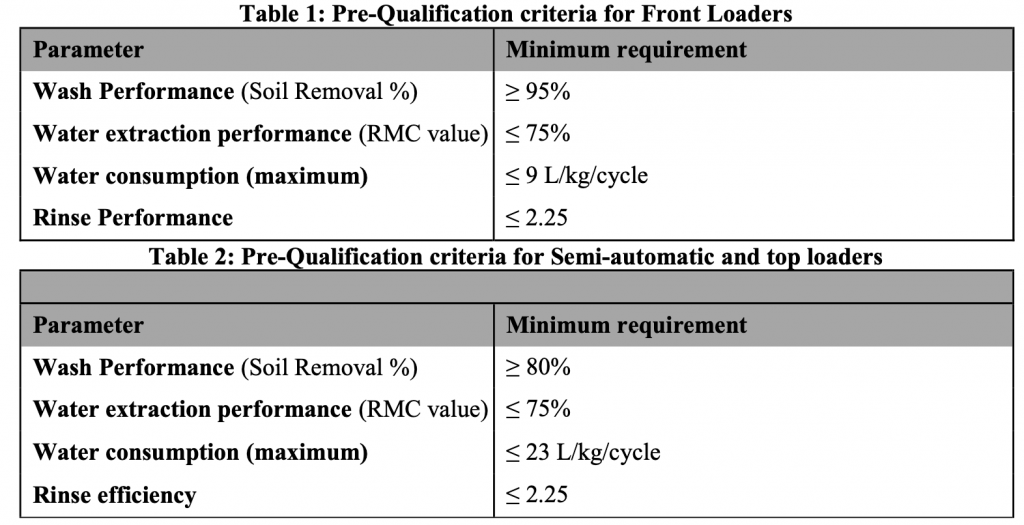
Every washing machine that is rated by BEE has to first qualify the Pre Qualification criteria listed above. It will be rated by BEE only if these are satisfied. Thereafter the BEE rating follows the below-mentioned efficiency criteria:
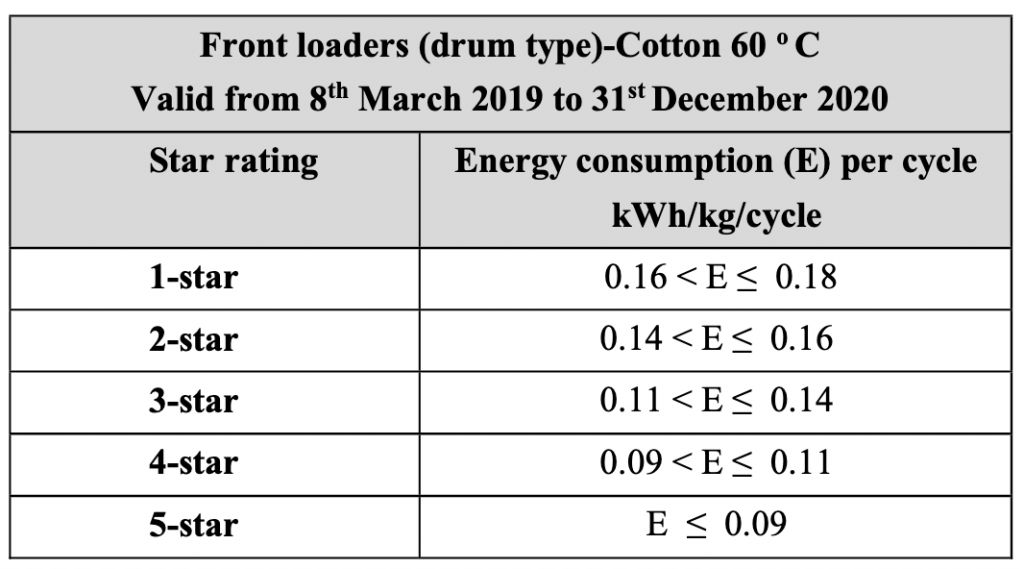
Front Load Criteria
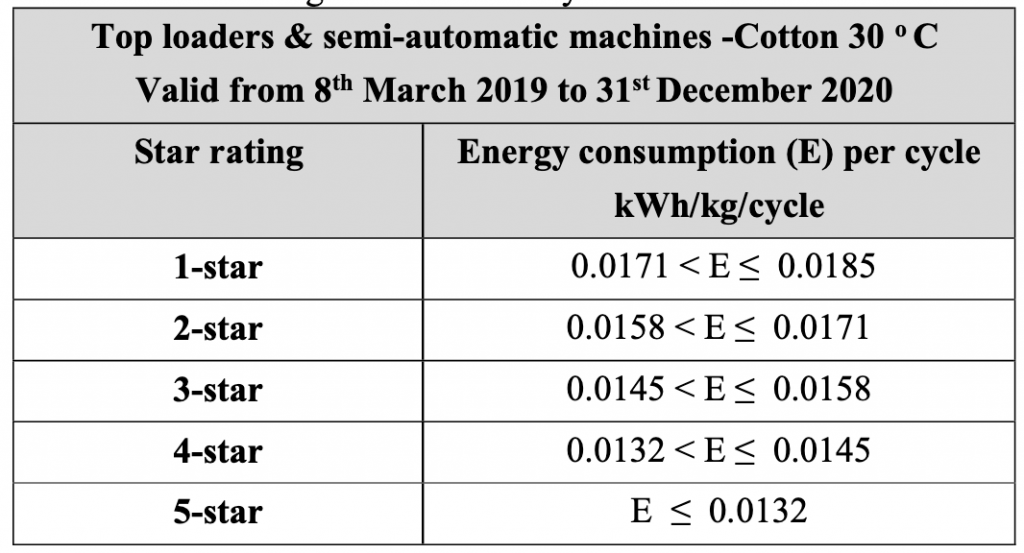
Top Load Criteria
Looking at these numbers, you may feel that front-loaders consume a lot more electricity. But please note that the front load criteria include washing clothes with water at 60 degrees, whereas top load criteria include washing clothes with water at 30 degrees (or room temperature). The difference is not that high if the element of heating is removed. In fact, if heating of water is added to a top loader, then the electricity consumption of a top loader will be much more than a front loader.
Washing Machine Size and Capacity
Most of the washing machines in India come with a capacity of 5kg to 10 kg. This size represents the ideal weight of clothes per wash for which a washing machine is designed for. Not that it cannot handle less or more, but if you consistently overload a washing machine, its life will go down. For a couple, a 5 kg machine is more than enough. For a family of 4, 6.5 kg machines are good enough. But for a bigger family high-capacity model would be required. Models mention their capacity and dimension in the specification sheet. It’s advisable that you carefully read them and decide the proper space for keeping washing based on its size. Keep at least six inches behind the washing machine for water hookups. Another important thing is to measure the size of your door to make sure washing machines come inside your house comfortably without sliding with the door walls.
Drying of Clothes in Washing Machine
There are 2 types of drying that come with washing machines: Mechanical and Thermal. In Mechanical Drying, washed clothes are spun around in a tub, and centrifugal force pushes the water out. This is the type of drying that is available in most washing machines, including the semi-automatic one. This results in up to 96% drying of clothes. The faster the clothes are spun, the dryer they come out (and this is one reason faster RPM is good in washing machines). You need to dry the clothes on a cloth line after mechanical drying to dry your clothes completely.
In thermal drying, hot air is blown along with spinning to dry the clothes. This type of drying is available in standalone dryers and washer dryers (or washing machines marked as washer-dryer). Thermal drying results in 100% drying of clothes, so much so that you can actually take out the clothes from the washing machine and wear them immediately (without any additional line drying). But this type of drying uses a lot of electricity as it has an inbuilt heater to heat the air. In fact, electricity used for drying can turn out to be much more than that used for washing.
All washing machines have mechanical drying; however, only a few have thermal drying.
More Motion More Cleaning
These days washing machine models come with different types and styles of rotation and revolution (e.g., tumbling, swinging, scrubbing, rolling, etc.) for a better wash inside the washing machine. Higher the number of motion styles better is a wash. Different kinds of motion are good for different types of clothes. Many models have inbuilt programs for handling Indian clothes, like a Sari Program. You should analyze your requirements and make sure that the model that you are buying satisfies your needs.
Hard Water Processing
The hard water problem is common in various places across India. It becomes difficult to dissolve the detergent in hard water if it is used in the washer. Also, white layers of residues accumulate around the drum and the supply pipe, ultimately choking them. Manufacturers like IFB have come up with hard water treatment technology in their newer models to tackle this challenge arising out of hard water. Many of their newer models can convert hard water to soft. Also, if the model can treat the hard water, make sure there is a dedicated filter to break down the bicarbonates in the hard water into fine crystals. This fine crystal accumulated over the surface results in scaling, leading to choking of the drain outlet.
However, inbuilt hard water handling is not a mandatory requirement. You can always use special detergents for hard water wash and use de-scalars to remove limescale formed in the washing machine. Your washing machine can perform well if you use de-scalars periodically with your washing machine.
Low Water Pressure handling
Low water pressure is a problem in many places where water is stored in overhead tanks. Most washing machines are designed to handle a specific water pressure. Most washing machines can handle water pressure as low as 0.3 bar (which is quite low). But still, if you feel that you have really low water pressure, then you should consider models from Whirlpool with ZPF or Zero Pressure Fill technology that can handle pressure as low as a 0.17 bar or Haier washing machine NZP (Net Zero Pressure) technology.
Voltage Stabilizer for Washing Machines
Voltage fluctuations are a problem in most cities in India. Many brands are advertising that there is no need for voltage stabilizers for their washing machines. For this, we would recommend that you look at the operating voltage of any washing machine and analyze if your voltage really drops below the specified range. If it does, you should go for a voltage stabilizer; else, you do not need to. Most washing machines with inverter technology would not need a voltage stabilizer. For more details on Voltage stabilizers, you must check this page on our website: https://www.bijlibachao.com/appliances/voltage-stabilizers-buying-guide-best-tv-ac-fridge-home-guide-india.html
Bubble Wash and Drum Sanitization
As we already mentioned that Indian households use cold water for washing, even in washing machines. So, to get the best wash out of the cold water without getting too harsh on the fabric, many newer models come with different bubble wash features. The central principle of this feature is that it converts detergent particle into a bubble which inflates around the soaked clothes, ingressing into cloth’s fiber to remove adamant dirt. If you are a hygiene-concerned human, you should surely check if your washer has a drum sanitization option. Drum sanitization is a process by which harmful allergens and germs residing covertly inside the washer drum get obliterated. Drum sanitization is done using a powerful jet stream of hot water.
Steam Wash and Anti Allergen
Just like hot water, steam is quite effective in removing dirt and sanitizing cloths. These days many washing machines come with steam wash where along with the water, they use steam to clean clothes. This is a useful feature for cleaning but can increase your electricity bills as generating steam requires a significant amount of electricity. But it can sanitize clothes, remove allergens, and can also remove wrinkles from clothes.
Auto Detergent Dispenser
If you are one of those people who is always indecisive about the optimum quality of detergent to put inside the washing machine, the auto dispenser option in the high-end models would be of great help. The detergent amount is critical because too much of it would deplete detergent stock faster and increase the water intake. On the other hand, taking in too little detergent would abate the washing performance. Moreover, it can also cause discoloration and unpleasant odor. So go for an auto detergent dispenser washers as they cleverly determined the requisite quantity of detergent based on the results from the advanced load-sensing sensors.
Spin Speed of Washing Machine
When you look at the specifications of a washing machine, you find that a spin speed (in RPM) is always mentioned. This spin speed is the speed with which the tub can rotate. In the section above on “How Washing Machines Work?” we have mentioned that washing machines utilize centrifugal force to take out dirt from clothes. And this is where the spin speed is important. A machine with a faster speed will put more force to take out the dirt. However, that does not mean that you should look for 1400 RPM speed in a 5 kg machine. But what it means is that when you look for a certain size, then look for a faster RPM machine in that segment. A faster RPM rate also results in more drying of the clothes out of the dryer.
Inverter Technology in Washing Machines
Inverter technology has been revolutionary in saving electricity in most appliances that have a motor. The benefit of this technology is that it makes the machine run at an optimum speed based on the load on the machine. A conventional washing machine has a motor designed for a fixed load and operates most efficiently when run at the optimum load. But a washing machine with inverter technology allows the motor to operate at an optimum speed for the load in the washing machine.
A washing machine with inverter technology has sensors that detect the loading of the washing machine. Based on the load, the electronic circuit determines the optimum speed at which the motor should be run to optimize electricity use. To have variable speeds, the washing machines have a VFD or Brushless DC motors that allow optimum electricity use at variable speeds.
So if you use a washing machine with different load sizes regularly, a washing machine with inverter technology can help.
Direct Drive Technology in Washing Machines
To understand this technology, it is better to first see the video below:
In this technology, many moving parts like gears and belts used with a conventional motor are removed. This ensures that the energy lost in friction in running a gearbox, etc., is reduced. Thereby saving electricity. Although these motors can be a bit bulkier than conventional motors, their efficiency is higher, and they also produce less noise and have a better life. So a machine with Direct Drive can certainly save on electricity. Additionally, they help reduce noise as the vibration caused due to gearbox arrangement is mitigated. Additionally, many models come with vibration reduction technology. If a buzzing washing machine makes you irascible, make sure you select a washer with a direct drive coupled with some noise/vibration reduction technology.
These days, some manufacturers have washing machines with both Inverter and Direct Drive technology, which can provide dual benefits if your load sizes vary. Having said that, the electricity consumption of a washing machine per load is less than 1 unit (or 1 kWh) for typical residential use. The cost-benefit of the latest technologies will depend on your usage of washing machines and the price differential of different models. In our next post on washing machines, we will try to include market research on various washing machines available in India and their electricity consumption.
Is There An App For That?
If you are one of the ‘smart’ users who use an app for most day-to-day chores, you’ll surely crave and admire washing machines with app connectivity. But be prepared to shell out more money if you want ‘smart’ features in your washer. These smart features vary vastly between models. It could start with as basic as an LED indicator on the machine to Amazon Alexa voice control (wherein you simply need to say: “Alexa, start the washing machine”). Though more and more models are coming with companion apps and voice control integrations, most of the app utility for control purposes is limited with a few exceptions. Few high-end models come with a neatly designed app that allows the user to start the wash cycle remotely through an app, shows the status of the ongoing wash cycle, and gives out an alert when the cycle is completed. Some apps also show power usage statistics which we really liked.
Note: If you have a washing machine equipped with a heater, please keep the water temperature as close to room temperature as possible. Water heating can significantly increase the electricity consumption of a washing machine.
Source of Information
Wikipedia link: http://en.wikipedia.org/wiki/Direct_drive_mechanism
Energy Saver’s Blog: http://www1.eere.energy.gov/education/roofus/washing_machine.html
Tufts University Link: http://sustainability.tufts.edu/frontloading-washing-machines/
About the Author:
Abhishek Jain is an Alumnus of IIT Bombay with almost 10 years of experience in corporate before starting Bijli Bachao in 2012. His passion for solving problems moved him towards Energy Sector and he is keen to learn about customer behavior towards Energy and find ways to influence the same towards Sustainability. More from this author.



























